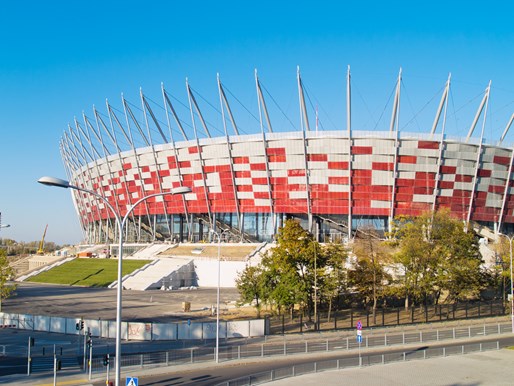World Stadium Index looks at the stadium legacy for the Euro 2012
The Euro 2012 kicked off last Friday, and so far the stadiums built for the event in Poland and Ukraine has provided a nice setting for the first exiting matches of the group stages. But when the tournament has found its final winner, will the $3 bn spending on stadiums still prove to be worth the investment?
Play the Game’s report ‘the World Stadium Index’ has analysed 75 stadiums built or renovated for mega-events between, and use different factors to conclude whether a specific stadium has turned out to be a profitable investment put to regular use or a rarely visited venue draining money from the owners’ pockets. The report has taken a preliminary look at the future prospects for the eight Euro 2012 stadiums looking at the investment and the proposed anchor tenants for the venues.
Disregarding all other spendings for the Euro 2012,, the two countries have spent about $3 bn on stadiums alone. This amounts to three times as much as in Portugal up to the Euro 2004. With the massive amounts of money spent on these stadiums, Poland and Ukraine run the risk that many of the venues will become heavy financial burdens for the host cities in the future.
The Olympic National Sports Complex in Kiev, Ukraine, was the most expensive of the eight stadiums and is, along with the National Stadium in Warsaw, Poland, the stadium with the most uncertain future. This prediction in the report is based on the lack of a proper anchor tenant.
In Warsaw, the two major teams have smaller and more suitable stadiums as their home grounds so it will be necessary for the stadium to host several events, in addition to the matches of the Polish national team, to be financially sustainable.
The Olympic National Sports Complex in Kiev has an anchor tenant in FC Dynamo Kyiv with relatively high attendance figures, but calculated against the capacity of the stadium it will take an increased amount of spectators to fill the stadium more than a few times a year, which is necessary if the stadium is to be financially sustainable and independent of other events.
While six of the stadiums built for the Euro 2012 are publicly funded, two are built using private investors. The two Ukrainian stadiums, the Donbas Arena in Donetsk and the Sports Complex Oblast Metalist in Kharkiv, are both mainly privately funded and the future looks brighter for these venues, concludes the report. Both stadiums have anchor tenants that had good attendance figures last season proving that there is a local sporting demand in both cities which justifies the building of the two stadiums.
“It is, however, obvious that several of the other UEFA Euro 2012 venues were built to meet the requirements of UEFA and that the current local sporting situation in each host city not has been taken into account” concludes Jens Alm, author of the World Stadium Index in the article ‘UEFA Euro 2012 – lasting legacy or a ‘New Portugal’?’
Here he also discusses the responsibilities of UEFA in making sure that its demands regarding stadiums aren’t pushing host countries into financial ruin.
Read the article by Jens Alm here
Read the complete analysis of the Euro 2012 stadiums and their legacy in the World Stadium Index here
Go to Play the Game’s theme page dedicated to the report, where you can find more information on the study of mega-event stadiums, download specific chapters from the report or read other articles from Play the Game regarding mega-event stadiums and their legacies.






